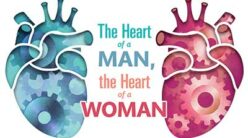Recently a man in his late 40s or early 50s began sharing his story of how he was lifting a very light box at his newly constructed home. All of a sudden a sharp pain originated from his lower back and shot down his leg. “That pain was so bad that I had to call off work for the next couple days,” he said. “Since that happened I haven’t been able to ride in a car for very long because the pain begins again and radiates down my leg.
This is not an unusual story in today’s society. Low back pain (LBP) is one of the most common complaints among adults in the United States. It accounts for more absence from work than any other type of occupational injury. The North American Spine Society estimates that one out of five Americans suffers from back pain, and that roughly nine out of 10 people older than age 30 experience back problems sometime in their lives. Low back pain is one of the most common complaints faced by primary-care physicians today.
Back pain is part of a larger group of ailments called musculoskeletal disorders (MSDs). So much work and money is lost treating these types of disorders that the Occupational Safety and Health Administration (OSHA) is developing a proposal together for ergonomic standards in the workplace. Ergonomic injuries currently cost $15-$20 billion annually for workers’ compensation and $30-$40 billion in other expenses such as medical care. Imple-menting OSHA’s proposal could prevent injury to as many as 300,000 workers annually and save the U.S. economy $9 billion.
Lower back pain centers in the five lumbar vertebrae stacked on the sacrum-the large bone at the base of your spine. Within this tight space there are a number of structures that can cause problems. Running along the sides of the spinal column is a series of ligaments that provide reinforcement for the spine in the lower back region. These ligaments have pain receptors, so if they are sprained they will let you know. Additionally, the disks or “shock absorbers” that lie in between each vertebra in the lower back have pain receptors in their periphery, which cause a pain response if they are compressed to the point where they extend beyond their normal boundaries. The disk most vulnerable to injury is the one between the fifth lumbar vertebra and the sacrum.
LBP is usually not the result of a sudden injury to these structures. Rather, it develops out of small amounts of trauma or microtrauma sustained over a long period of time. Low back pain can be divided into two main types: mechanical and compressive. Mechani-cal pain results from inflammation caused by irritation or injury to the disk, facet joints, ligaments, or muscles of the back. A common cause of mechanical pain is disk degeneration. Mechanical back pain usually starts near the lower spine and may also spread to include the buttock and thigh areas. It rarely extends below the knee.
Compressive or neurogenic (meaning the nerve is involved) pain occurs when the nerve roots that leave the spine are irritated or pinched. A common cause of compressive pain is a herniated disk. This type of pain is in the same general area as mentioned above, but now it extends past the knee to the foot.
Compressive pain can be caused by a list of complications such as, but not limited to, being overweight, wearing high heels, and weak abdominal muscles. Additionally, lack of appropriate muscle length or strength can affect the curvature of the lower back and cause LBP. Good range of motion (ROM) can decrease the probability of a low back problem; if LBP has already occurred, greater range of motion can decrease the severity of the problem. Flexibility exercises can increase your ROM, but remember, when you stretch, to reach as far as you can, pause, and hold it for 15 to 20 seconds. Do not bounce, no matter how limber you think you are. This damages the muscles and could cause you further problems.
The American College of Sports Medicine (the recognized international authority on exercise physiology and sports medicine), has suggested the illustrated range of motion and strength-building exercises for those who either have LBP or are trying to prevent it. The first six stretches could be used to increase the ROM in the lower back followed by the four exercises to increase the strength and endurance of the lower back muscles. It is best to do all of the exercises at each workout. Use the ROM exercises to warm up the muscles and then move into the exercises that will strengthen the lower back.
Although exercises play a large part in the rehabilitation and/or injury prevention of the lower back, there is another very important element to consider. Water is an important factor when dealing with LBP. Those disks resting between the vertebrae and functioning as the body’s natural shock absorbers are filled with water. The water contained in these disks supports 75 percent of the upper body weight, and the fibrous materials around the disks support 25 percent. Once dehydration starts in the body, the back is one of the first places to be affected, with the fifth lumbar disk being involved in 95 percent of the cases of LBP. The heavier a person is, the more water they need.
An easy formula to remember on how much water you need each day is to take your weight in pounds and divide by two. This answer will give you the ounces of water you need to drink daily.
Most exercise programs call for three workouts per week. But the lower back is a bit different. Research reported in the journal Spine (1985) found that low back exercises are most beneficial when performed daily. The old adage “no pain, no gain” does not apply to exercises for the lower back. The back has tremendous workloads placed upon it daily just in normal activity.
An additional component to back pain prevention is your cardiovascular system. General fitness programs that also combine cardiovascular components have been shown to be more effective in both rehabilitation and injury prevention than low back exercises alone. This cardiovascular component could be anything from walking to cross-country skiing or even hydroaerobics (aerobics classes in a pool setting).
The temptation will come to add more weight to your exercises when they seem to be getting too easy. This is, of course, the way we measure success, by adding more. If we can do more weight, then we are better. This may be true for most of the other parts of the body, but not so for the lower back. Endurance is more protective against low back injury than strength. Therefore, it is better to stay with more repetitions and less weight. Body weight alone is sufficient for increasing lower back strength and endurance.
Finally, the all-prevailing question in the mind of many is: How long will it take? Compliance and patience are two of the most important traits to develop when working to strengthen your lower back. Increased function and reduced pain may not occur for up to three months. It seems like a long time, but the rewards of a healthy back will reap benefits for decades to come.






